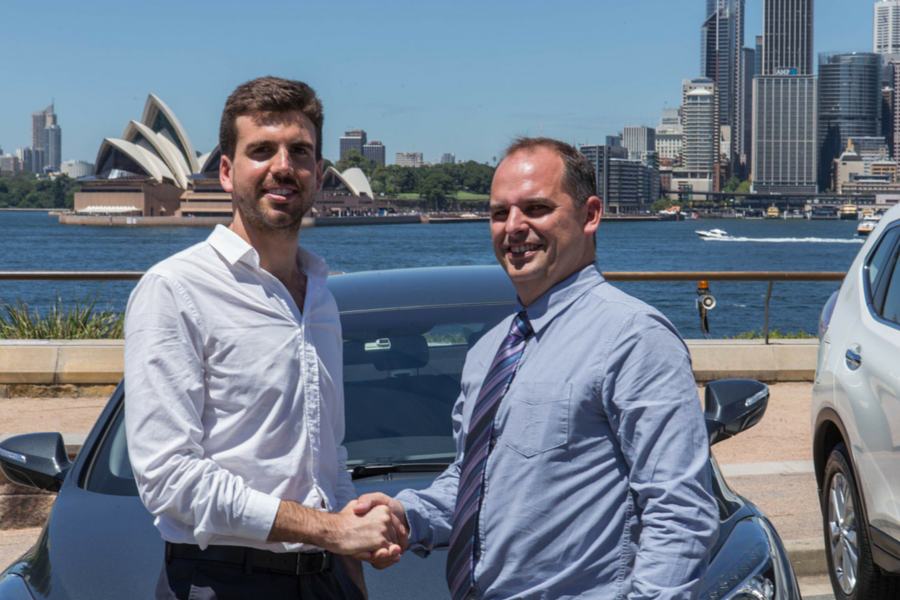One of the best things about Uber, as almost any recent Uber passenger will tell you, is that the cars are often only a few years old and in great shape – a significant contrast from your average taxi. While it helps make for a comfortable ride for passengers, Uber’s focus on newer cars with higher safety standards means that there is a huge number of potential drivers left out in the cold.
Enter Splend, an Australian car rental startup that provides customers with brand new vehicles specifically for the purposes of on-demand driving services such as Uber.
The service works through a subscription model, with customers paying a one-time joining fee of $275, which covers administrative costs and a police check, and then a weekly fee of $275 to cover the cost of the car and servicing. Putting the average hours worked as an Uber driver at 40 per week, Splend estimates that after the subscription fee, Uber fees, and fuel costs are taken into account, a subscriber can earn $1000 per week. The fees cover subscribers driving up to 1000 kilometres per week, with a further 10c per km fee in place to cover additional operating and maintenance costs.
Founder Chris King came up with the idea for the service last year after noticing a gap in the market, with 10 to 15 percent of uberX driving applicants turned away for not owning a car, or owning one that is more than nine years old.
“Splend is helping remove one of the barriers to entry for prospective ride sharing applicants,” he said.
The cars given to Splend drivers are sourced primarily through Automotive Holdings Group, and are valued at an average of $40,000 including registration, stamp duty, business-grade comprehensive and compulsory third-party insurance, and scheduled maintenance. Drivers will also be able to upgrade their vehicle to a newer model every 12 months.
The startup has partnered with FleetRisk to conduct cognitive testing on all drivers, and fitted all vehicles with Mercurien BetterDriver telematics in order to track on-road behaviour and driver safety. King said the startup will reward its best drivers, a listing determined both by Uber’s driver rating and its own driver tracking technology, with incentives such as a new Tesla Model S.
Splend is active in Sydney, Melbourne, Brisbane, Canberra, and Perth, with over 350 vehicles on the road already and 500 further approved applicants to receive their vehicles over the next few weeks, according to King. He said these drivers range from students to retirees and stay at home mothers.
The startup is generous with its application process, with King explaining that Splend aims to “benefit the millions of Australians needing an opportunity the most; those who are either unemployed or underemployed, or those that can’t get credit in the first place due to low income, poor credit history or potentially no credit history at all.”
Splend will look to help these drivers succeed by pairing them with their own ‘partner success representative’.
“[They will] provide support, small business coaching, and tips and tricks to help guide you to success. For Splend, we are all motivated to ensuring our vehicle partner drivers are the best – and most successful – on the road.”
The small business coaching is an interesting feature, highlighting the fact that Splend is very much focused on providing vehicles for Uber and, according to King, various on-demand delivery platforms.
“This is not a car rental for general public and is purpose built for smart phone applications in the on-demand sharing economy,” he said.
King said he expects a number of players to enter the market this year, with conventional car rental services in particular to begin targeting the space, but he believes that Splend’s value proposition is “significantly more powerful.”
However, the success of Splend and any push into the on-demand market launched by conventional rental companies will depend on the success of the on-demand market itself. Recently deemed legal by the ACT and NSW Governments, Uber is a darling among most drivers and passengers. However, that may not always be the case – drivers across the US protested last month after Uber cut fares and, in turn, driver earnings in order to entice passengers to use the service. More worrying still is the fact that Uber’s grand vision for its service is to have a fleet of driverless cars chauffeuring passengers around.
Nevertheless, King is passionate about helping people through Splend, and his goal for the next 12 months is simple: “We are aiming to put thousands of vehicles onto the road in 2016.”
Image: Splend CEO Chris King, left. Source: Supplied.




















Trending
Daily startup news and insights, delivered to your inbox.